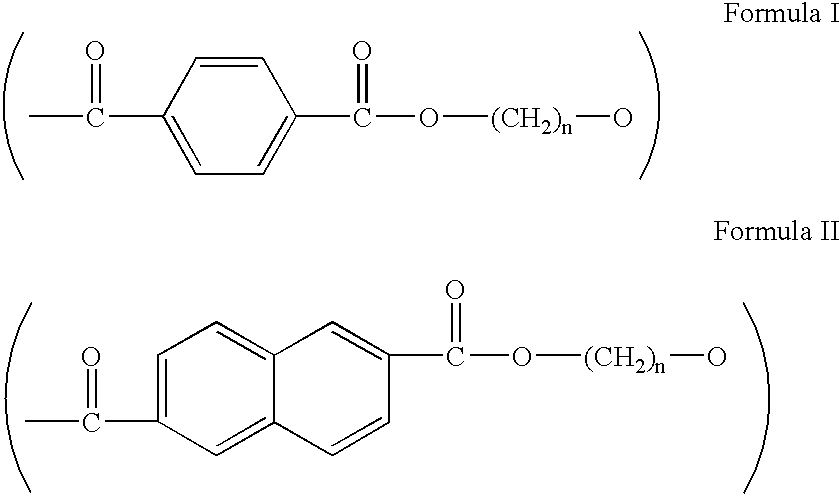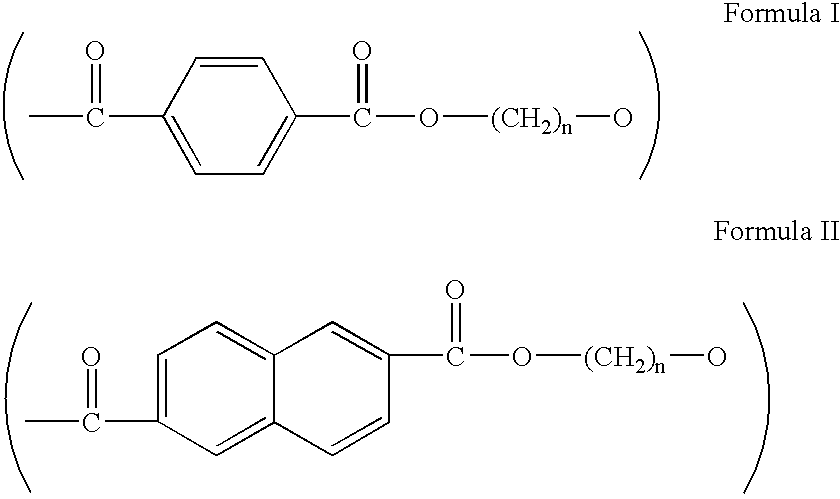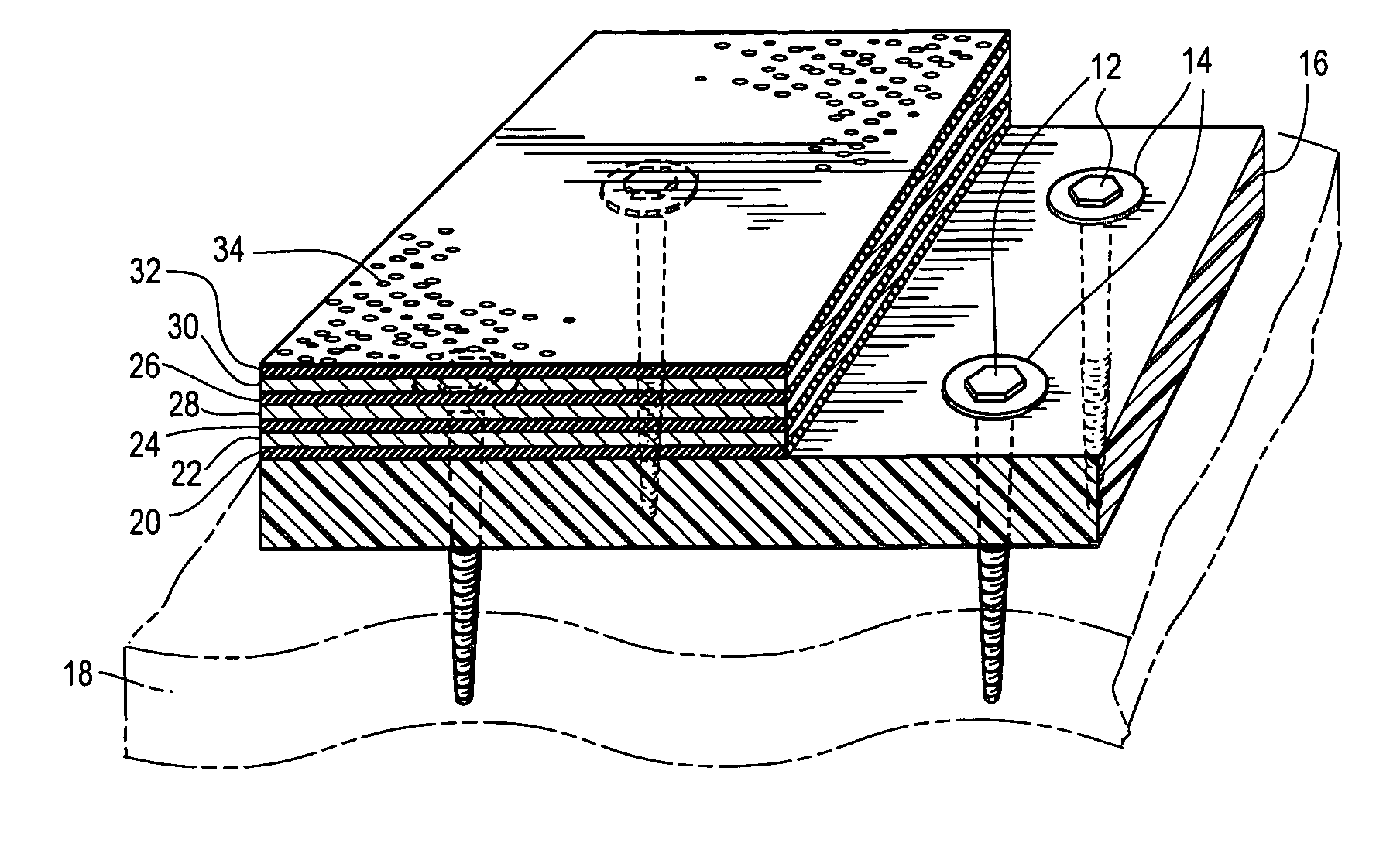Foamed roofing materials and methods of use
a foamed roof and roofing technology, applied in the direction of highways, traffic signals, synthetic resin layered products, etc., can solve the problems of poor standardized test scores of roofs, unsuitable foamed resins for direct application of hot asphalt, and high labor and material costs
- Summary
- Abstract
- Description
- Claims
- Application Information
AI Technical Summary
Benefits of technology
Problems solved by technology
Method used
Image
Examples
example 1
[0042] For Example 1, a polyester foam resin formulation of this invention was used as the insulating and inner substrate layer material of the mocked up roof as described previously. A description of the manner of fabrication for the polyester foam resin of Example 1 follows. The polyester employed was PET (Shell's 7207) at a rate of 95.83 weight percent of the final foam resin. Concentrate A was employed at a rate of 3.50 weight percent of the final foam resin and consisted of 10 weight percent pyromellitic dianhydride and 90 weight percent PET. Concentrate B was employed at a rate of 0.67 weight percent of the final foam resin and consisted of 3 weight percent Na.sub.2CO.sub.3 and 97 weight percent PET. These three entities were fed into a system comprising a 4.5" extruder followed by a gear pump and a 6" extruder. Freon 142B was used as the blowing agent at a rate of 5 weight percent of the total feed and was introduced through an inlet port about midway into the first extruder....
example 2
[0044] For Example 2, the mocked up roof substrate layer was constructed of Celotex's HYPOTHERM which is a one inch thick polyisocyanurate roofing insulation board having a density of about 1.9 pounds per cubic foot.
example 3
[0045] For Example 3, the inner substrate layer of the mocked up roof was constructed of Celotex's HYPOTHERM AP which is a product similar to the material of Example 2 except that is has wood fiber facers (each about 50 mils thick) on both sides of the sheet. The density of this material with the facings is about 3.1 pounds per cubic foot. This product has been designed to be applicable for direct hot asphalt mopping.
PUM
| Property | Measurement | Unit |
|---|---|---|
| Temperature | aaaaa | aaaaa |
| Fraction | aaaaa | aaaaa |
| Angle | aaaaa | aaaaa |
Abstract
Description
Claims
Application Information
 Login to View More
Login to View More - R&D
- Intellectual Property
- Life Sciences
- Materials
- Tech Scout
- Unparalleled Data Quality
- Higher Quality Content
- 60% Fewer Hallucinations
Browse by: Latest US Patents, China's latest patents, Technical Efficacy Thesaurus, Application Domain, Technology Topic, Popular Technical Reports.
© 2025 PatSnap. All rights reserved.Legal|Privacy policy|Modern Slavery Act Transparency Statement|Sitemap|About US| Contact US: help@patsnap.com



